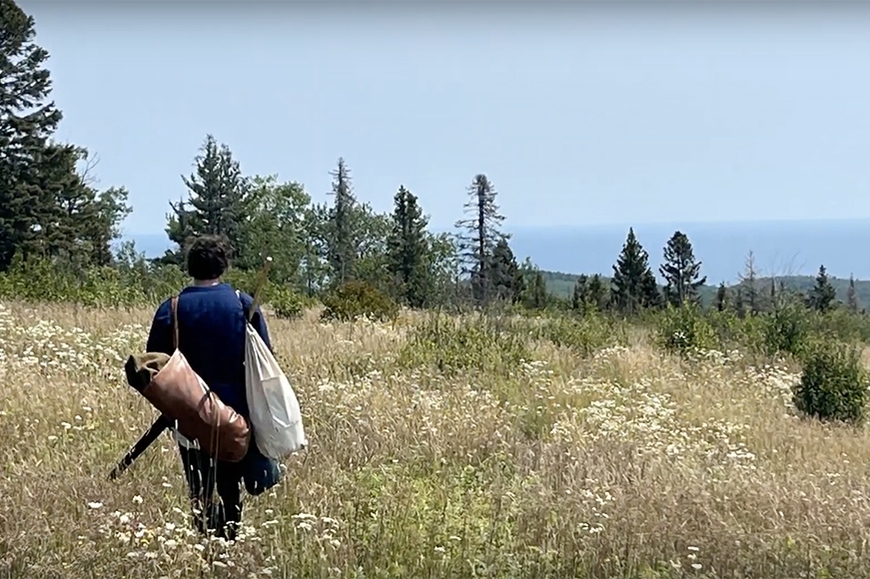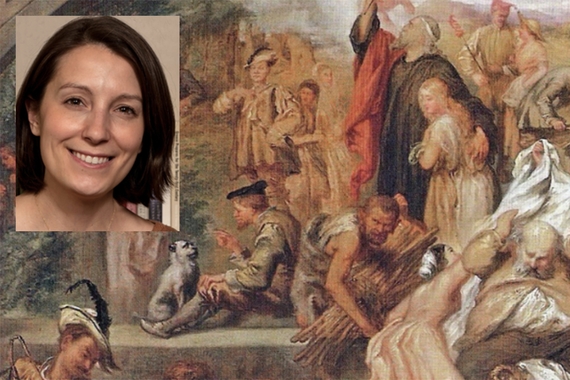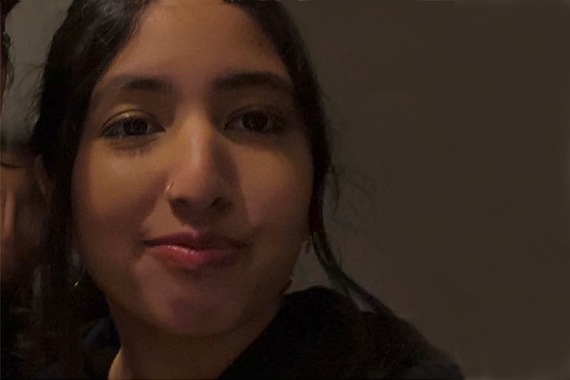Medievalist on a 21st-Century Pilgrimage
Reading The Canterbury Tales, with its portraits of different pilgrims, English and History major Leo Dannersmith became curious about how people traveled in medieval Europe. With the help of English Professor Rebecca Krug, Dannersmith researched primary sources from that period—then attempted to replicate the 14th-century experience last summer on the Superior Hiking Trail, with support from the Undergraduate Research Opportunities Program. UROP provides UMN undergraduates the opportunity to partner with faculty members on research or creative projects. Selected students receive $1,800 for 120 hours of research, paid through financial aid. (The deadline for spring semester is October 7.)
Dannersmith graciously responded to our questions.
Describe your UROP project proposal. How did you find your faculty sponsor?
There is a lot of literature from the 14th century around pilgrimage, but there's still much that isn't known about it, particularly concerning the practicalities of travel in medieval Europe. My proposal was an experimental archeology project, a methodology where you attempt to recreate practices and materialities from the past in the modern day to see what can be learned from experiencing them yourself. Myself and three volunteers hiked and camped along the Superior Trail for five days using 14th-century shoes, baggage, and tents. We also brought period weapons that were associated with travelers and pilgrims.
I had taken several classes with Professor Rebbeca Krug and knew that she is an expert in medieval pilgrimage literature. Before I did a UROP, we completed an independent study together to establish a historical basis for the re-creation. She was integral to the project.
What was it like on the Superior Hiking Trail, especially with replicating 14th-century equipment and clothing?
The Superior Hiking Trail was beautiful but much more rugged than I expected. The Sawtooth Mountains are in fact mountains, despite being in Minnesota. I have hiked in Colorado, and at times the steepness of the trail felt equivalent. It would have been good to have had a better understanding of this, so I could have adjusted the distance we were traveling. Overall, I was very impressed with the 14th-century equipment. The shoes in particular worked really well on the natural terrain. Though there were certainly some aching feet, there were no blisters from the entire five-day hike. The baggage was more difficult to carry than a modern backpack would have been, and our tents certainly did not do nearly as good a job keeping out mosquitoes and cold as modern ones. They are called cloak tents, since they could be worn as a cloak as well, and the major takeaway was that they made better cloaks then tents.
We also gained lots of interesting information about the experience of carrying medieval weapons while traveling. Highlights included the view from Pincushion Mountain, swimming in the Kadunce River (in medieval underwear), and sword fighting on a rock in Lake Superior. I will be posting pictures and videos from the trail on the YouTube channel The Minnesota Medievalist.
Any advice for students interested in UROP?
As is demonstrated by my project, this program accepts all sorts of projects. Choose a topic you are passionate about. If you are passionate about what you’re learning about, the work will fly by, and your project is sure to be fascinating!
Why did you major in English?
I started off college with a history major, but I took so many classes on medieval literature and Shakespeare that I picked up the English major almost by accident! A happy accident indeed. I have always had a great love of stories both historical and fictional, and the English department has given me a great chance to delve further into what these stories are and how they work.
Are you pursuing any majors, minors, and/or internships, outside your English major?
Besides my history major, I am also minoring in Medieval Studies. I work as the academic aide for the Center for Premodern Studies and am a fellow for the Oakeshott Institute, a local nonprofit interested in experiential learning around historical arms and armor.
What is a favorite work you read for a UMN English class?
Tough question. It would probably be a tie between “The Knight's Tale” in The Canterbury Tales and Shakespeare's Much Ado About Nothing.



